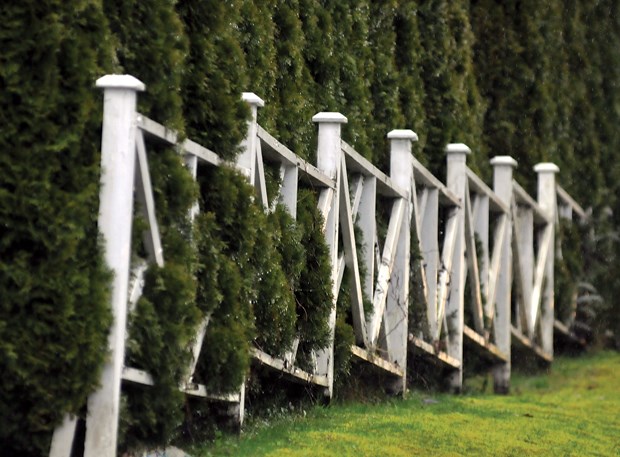They are big, usually green, often overbearing, and sometimes tattered and not doing their intended job.
The ubiquitous hedge of modern suburbia is so widely planted that if hedges were outlawed tomorrow, many landscape maintenance companies would notice the loss of hedge pruning business.
Hedges are also controversial and in 2013, the City of North Vancouver reviewed the possibility of regulating hedges within the city based on citizen request. The city did not enact a bylaw due to several factors, including a problem with defining "what constitutes a hedge?" Cost, practicality and staff resources were also contributing factors in the city's decision.
Only two municipalities within the Metro Vancouver region have hedge bylaws, the City of New Westminster and the District of Maple Ridge.
Many property sizes and shapes do not suit hedging as a design choice. With some gardens it's a matter of shade cast by the hedge.
For a growing number of people hedge maintenance is something to be avoided. And with the advent of smaller lots and laneway homes, a new slimmer and smaller growing hedge plant is needed from the nursery industry.
There's also the problem of a limited variety of hedge plants available. The traditional hedge species sold are cedar, yew, laurel, barberry and boxwood. For many gardens those choices don't suit the conditions or the owner's taste.
To help make your hedging selection easier here are some things to consider:
How wide, how tall and how fast?
Hedging is all about width and height. Most people have a limited amount of horizontal width but a tall height they wish to block. There's a tradeoff here as quick-growing plants provide quick cover though often grow too large for the space. Slow-growing plants are less likely to outgrow their space but do not provide cover soon enough. The choice comes down to the maintenance level you are willing to accept. Quick cover means more maintenance, slower cover means less maintenance.
Alternative plant forms to use as hedging.
Most hedges are pruned to maintain shape. But many plants make good hedges as long as you are willing to accept a looser hedge-like form versus the traditional box form hedge. Rhodos, for example, make good hedges where there is enough room.
The regular Heavenly Bamboo (Nandina domestica) makes a good narrow hedge to four or five feet tall. A carefully chosen species of bamboo also makes a good hedge, but you must choose clumping forms of which there are several.
Many common plants, like purple smoke bush or the winged burning bush, can also be used as hedges. Ultimately, it is a matter of envisioning how any plant could work as a hedge.
If not a hedge then what?
The most common alternative to hedging is fencing. For most people this is the preferred option. However, over the past few years I've seen more lattice-type fencing being used in front yards to provide entrance areas or screen along driveways. Lattice fencing can also be used effectively around backyard patios and decks especially when combined with climbing vines. Carefully choose any climbing vine to be planted on lattice. Some vines, such as kiwi and wisteria, are strong enough to crush lattice with their twining growth.
Larger growing vines also require more maintenance. Smaller vines, like clematis, honeysuckle or annual vines like sweat peas, are easier to maintain and enjoy.
The landscape berm, popular in the 1970s, was widely used as a hedge alternative. Berms are combined with trees and shrubs to create a visual or noise barrier.
The newest alternative to the hedge is a green or living wall. These walls take some skill to build but they occupy a foot of width and can be built higher than fence height. The walls are planted with perennials, small shrubs, annuals and vegetables. Drip irrigation is usually added on the top of those walls to provide easy watering.
The shared hedge.
For some owners, albeit very few, the shared hedge has proven to be the perfect solution. The few that I have seen were planted right down the property line with both owners owning half the hedge and each owner paying 50 per cent of the annual pruning cost. This works if you have very amicable, longterm neighbours. The advantage of the shared hedge is a larger width for hedge growth, which in turn allows for a broader selection of hedge plants.
To hedge or not to hedge.
Not all privacy issues can be solved by planting a hedge. So it's important to question if any hedge is the correct design feature for the garden. Beyond design, poor plant selection is the primary reason some hedge owners are dissatisfied. It may be too expensive to replant a giant hedge, so choose well before you plant a new one.
Todd Major is a journeyman horticulturist, garden designer and builder, teacher and organic advocate. [email protected]



